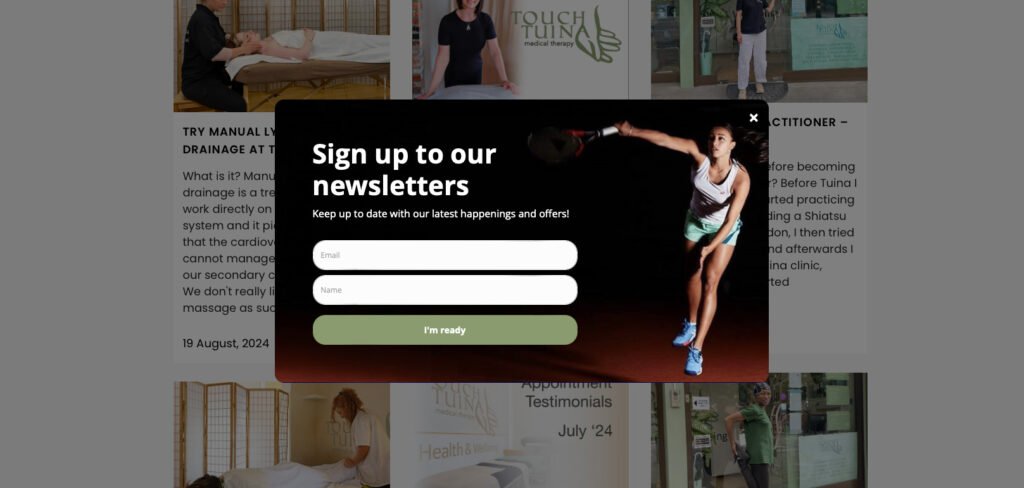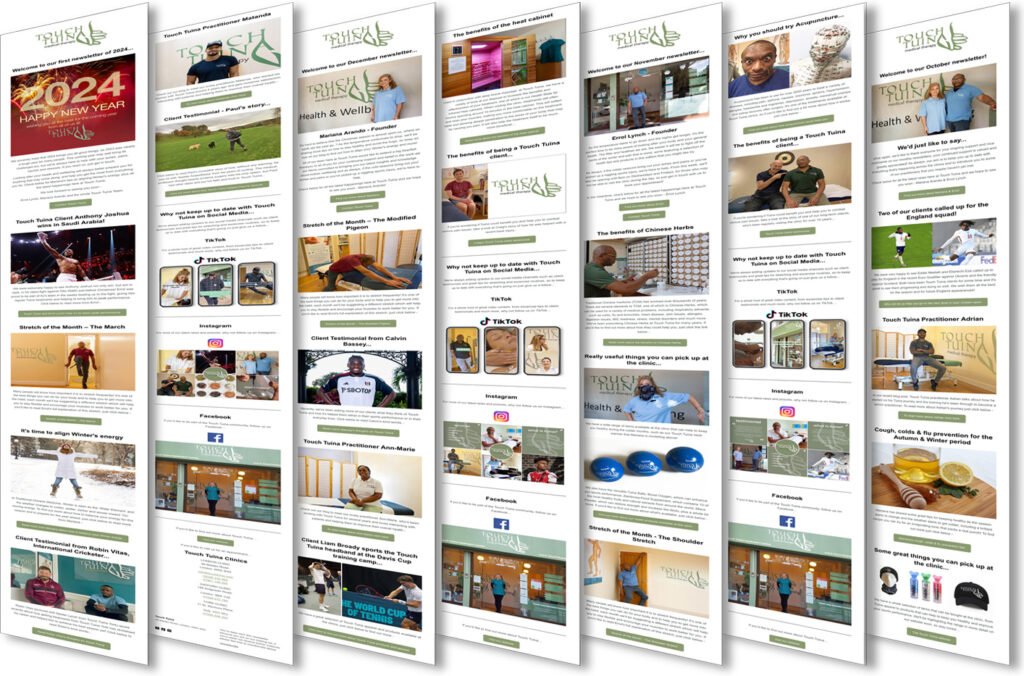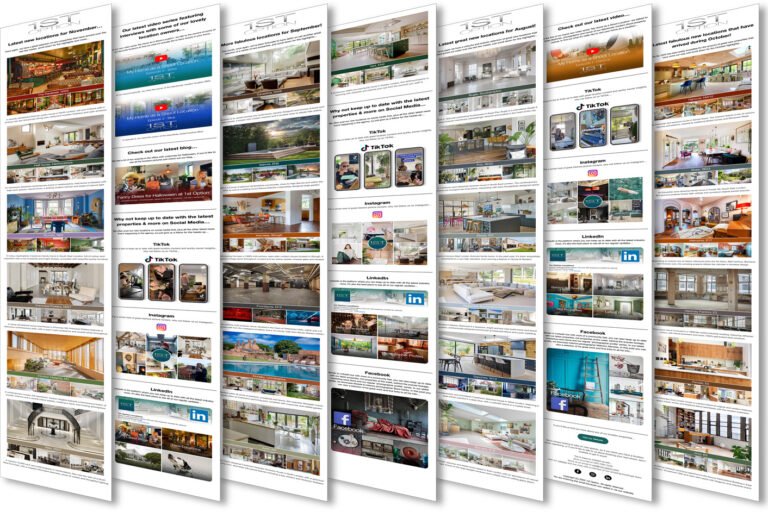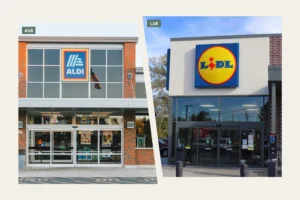Anybody that’s in business or offering some kind of service is likely to have come to the realisation at one time or another that marketing to your prospective client base and spreading your message should be pretty high up on your list of things to do. This is why Newsletters are an important marketing tool.
The question is ‘what are the most effective ways of doing this?’. To an extent, it will depend on the type of business you’re in. There are traditional tried and tested methods such as TV or Radio ads, print media ads, sending brochures out in the post, cold calling or client recommendations, and these may well be appropriate for you. Whatever business you’re in though, it’s highly likely that in this modern world you should be taking advantage of the myriad of technology that’s now available.
Most businesses have come to realise that utilising the power of social media is where a lot of their focus now needs to be directed. Platforms such as Instagram, LinkedIn, TikTok and Facebook can do an awful lot to raise your profile and keep you at the forefront of potential or existing customers’ minds, if used strategically and effectively.
All of these platforms, however, rely on your customers being inspired to engage with your content, to follow you and interact with you. Building up this engagement and interaction can be time-consuming and at times frustrating, but if done successfully, it can ultimately be well-worth the effort.
The power of a newsletter
There is another highly rewarding area though that’s often overlooked, which is sending out regular digital newsletters to your client base. This means of communication shouldn’t be underestimated, as it’s the only method that gets your message directly into people’s inboxes. Most businesses will have a database of customers’ email addresses and with their permission, utilising these effectively can be an absolute goldmine. This is why Newsletters are an Important Marketing Tool in your arsenal of outreach methods.

The first thing that should be pointed out is that due to privacy laws and GDPR, it’s very much frowned upon (and in most cases illegal) to send marketing material to people without their permission to do so. One way to combat this is to actually ask people if you can, preferably by email so it’s in writing! Another way, and one which everybody should be utilising, is by having a sign-up form on your website that encourages people to subscribe themselves.
Having a sizeable database of useable customer email addresses opens up a whole host of possibilities for ways in which you can market what you offer. For example, if you’re thinking of doing some kind of special offer, not only can you let your customers know about it but you can also offer extra benefits to the people who are considered to be your most loyal purchasers, thus creating even more customer loyalty.
How should a newsletter be structured?
When thinking about how to structure your email marketing, there are several things to consider. Firstly, you’ll need to set up an account with a specialist mailout platform, such as MailerLite or Mailchimp. The platform you choose will depend on the size of your database and the particular facilities that platform offers. Before making any decisions there are many resources online which will price-compare the packages available from each one, listing their specific pros and cons. Doing some research will help you to make the most informed choice that best suits your needs.
What should it include?
The next thing to think about is the type of content you want to showcase. As a general rule of thumb, it’s best to keep any text concise and engaging, as most people have many demands on their time and prefer to skim read where possible. Imagery is good, as it grabs people’s attention and helps to keep them engaged. Be sure to use pictures that you have the rights for though, as using images without permission could get you into trouble.
Unless you’re dealing with a very specific audience that you know wants to be informed as much as possible, you don’t want your newsletters to be too long and contain so much content that people will get bored half-way through and move onto something else. So short, sharp and to the point, in the most engaging format possible, will keep your customers interested and subscribed.
How frequent should they be?
Lastly, keep them regular. Whether you send your newsletters once a month (any more frequently will probably be a turn-off), every two months or maybe every quarter, make sure that you stick to the plan. Newsletters that turn up infrequently or at random times are generally not taken as seriously and often lead to people unsubscribing. So there you have it, that’s why Newsletters are an important marketing tool!

Here at 1st Option Digital, we handle newsletter campaigns for many of our clients, from producing the content, composing the text, scheduling, managing the database and signups, managing the platform and detailed reports on the effectiveness of each sent campaign. So if you think that this is something that could work for your business and you don’t have the time or expertise to manage it yourself, why not talk to us to find out more about how we could help!
Find out more about how 1st Option Digital can help with your newsletter campaigns here!





